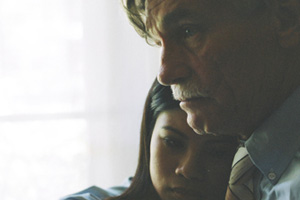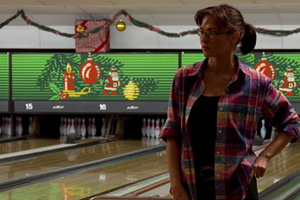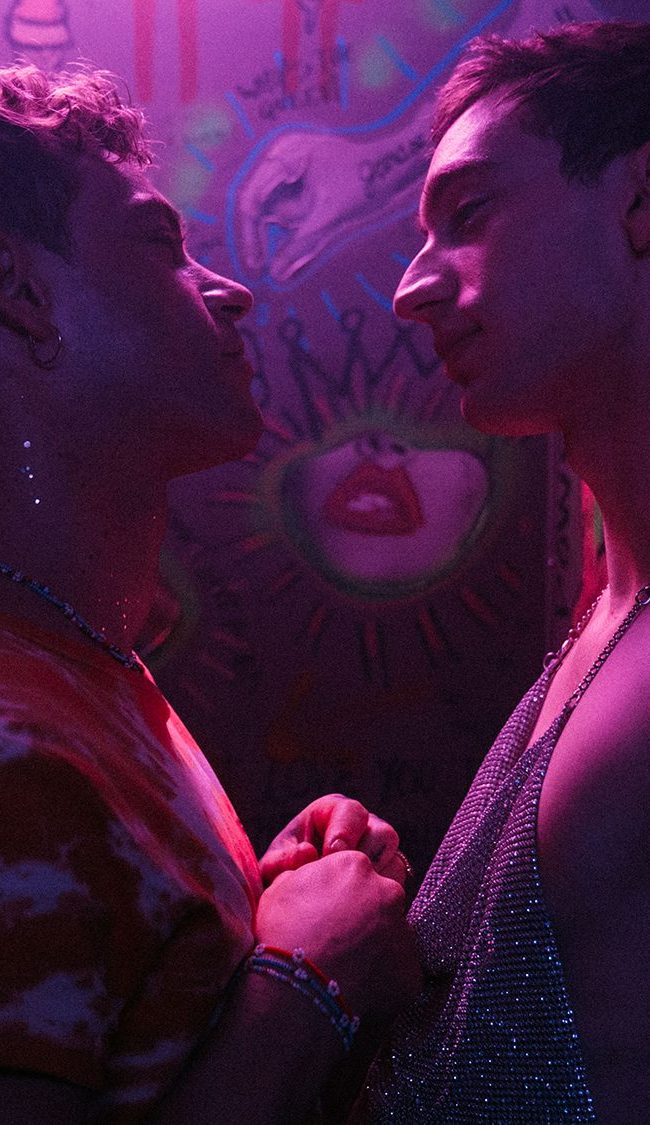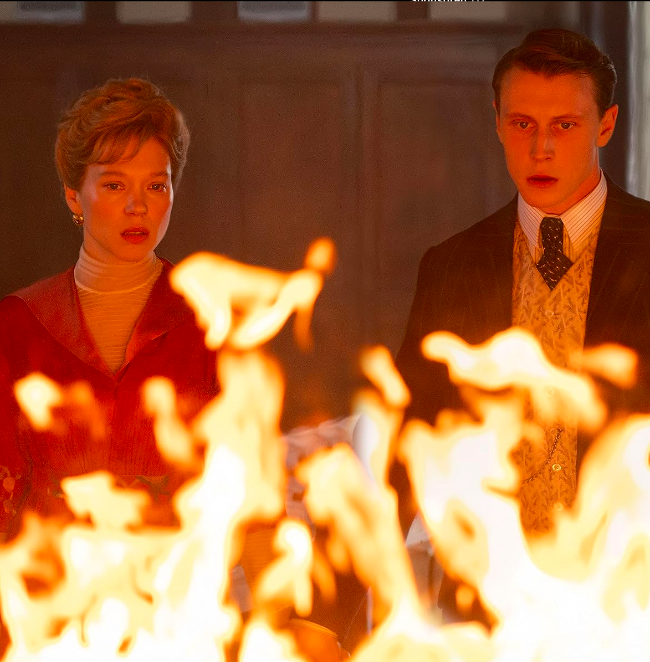SARASOTA FILM FESTIVAL 2010 – A Wrap-Up
If the Sarasota Film Festival isn’t my very favorite festival of them all, it’s certainly hovering right near the tippy-top. I’m sure that sounds like a fishy statement to make considering my girlfriend is Director of Programming Holly Herrick, not to mention the fact that Ms. Herrick and Artistic Director Tom Hall programmed my first two features back in 2006 and 2007 (before the love boat had set sail, I assure you). So for unavoidable reasons, I’m predisposed to loving Sarasota.
Having said that, there are also many unique factors that distinguish SFF from other ‘more prominent’ American fests. After the hustle-and-bustle (and freezing cold) of Sundance, and a SXSW that is feeling busier and busier every year, it comes as a welcome shock to the system to travel to a relaxed, sunny climate and watch movies with real people who aren’t involved in the industry and who are coming at these films from a very different angle. This almost always results in hilarious Q&As, such as back in 2009 when a confounded audience member politely asked Andrew Bujalski to explain Beeswax. This viewer wasn’t being snarky. He genuinely had no idea what he had seen. Or take this year, when a viewer suggested that filmmaker Brent Stewart should insert archival Vietnam footage early on in his The Colonel’s Bride because “that would really complete the package for me,” as if he was showing a work-in-progress.
 But it would be wrong to think that these audiences are clueless. Two questions after that editorial suggestion in the Q&A of The Colonel’s Bride, another woman spoke up to comment on an early moment in which the clarity of Stewart and cinematographer Neil Lisk’s 35mm imagery conveyed in one simple shot the scarred gravity of this character’s deeply emotional past. And then there’s Dogtooth. While the screening I attended hadn’t sold out, there was a healthy turnout, many of whom appeared to be 70-year-old couples on a date. After a hysterically sheepish introduction by Ms. Herrick, who warned everyone that they were in for something very different, the film began. There was laughter throughout in all the right places, and hardly anyone walked out. The next morning, as we got coffee in Buddha Belly Donuts, which doubled as the festival’s box office, an older gentlemen came up to Holly to tell her how much he enjoyed Dogtooth and how wild he thought it was.
But it would be wrong to think that these audiences are clueless. Two questions after that editorial suggestion in the Q&A of The Colonel’s Bride, another woman spoke up to comment on an early moment in which the clarity of Stewart and cinematographer Neil Lisk’s 35mm imagery conveyed in one simple shot the scarred gravity of this character’s deeply emotional past. And then there’s Dogtooth. While the screening I attended hadn’t sold out, there was a healthy turnout, many of whom appeared to be 70-year-old couples on a date. After a hysterically sheepish introduction by Ms. Herrick, who warned everyone that they were in for something very different, the film began. There was laughter throughout in all the right places, and hardly anyone walked out. The next morning, as we got coffee in Buddha Belly Donuts, which doubled as the festival’s box office, an older gentlemen came up to Holly to tell her how much he enjoyed Dogtooth and how wild he thought it was.
I know one of my stubborn arguments about this industry is that we shouldn’t be so obsessed with connecting to audiences, for even with a ton of fiscal backing, a film like Dogtooth would never become a box office hit. But watching movies at the Sarasota Film Festival challenges that assumption, for in this environment, regular people who aren’t in any way connected to the industry pay money to walk down a long hallway at their downtown multiplex, past the freshest Hollywood releases, to encounter challenging and ambitious low-budget, foreign, and nonfiction films that they otherwise won’t ever have a chance to see (at least in this professional of an environment). Afterward, they emerge from the theater, only to sit down next to Tom or Holly to really pore over what they’ve just seen. They take these movies more seriously than most of the crowds at the industry fests I attend.
As for the programming itself, a regional festival like SFF—or at least as realized by Hall and Herrick—has the luxury of picking and choosing from the best of Toronto, Sundance, SXSW, and others. There is no pressure to deliver “premieres” of any sort. The only mandate is to show the best work from the past year. What’s most impressive about this, however, is even in the case of a literal overlap with a potential ‘rival’ like the Florida Film Festival, Hall and Herrick work with like-minded FFF Programming Director Matthew Curtis to ensure that the filmmaker comes first. If both of these festivals want to show a film, they will do just that. More importantly, they’ll work together to ensure that the filmmaker can attend both fests. I’m not going to name names, but I know of many fests that have less of a reason to feel competitive yet get overly proprietary at the expense of filmmakers, who simply want their work to be shown.
As much as we need to get over the “premiere” issue, it should be noted that in 2010, SFF screened a few soon-to-be-breakout American indies before anyone else. I’m not writing this to toot Sarasota’s horn. I simply want to remind filmmakers, distributors, and press outlets that sometimes gems slip through the cracks. The more movies that are made, the more this will continue to happen. If a particular work screens for the first time in Sarasota, that doesn’t mean it has something wrong with it. This is especially true in the case of two films: the aforementioned The Colonel’s Bride and, more noticeably, Brett Haley’s Audience Award-winner The New Year. With regards to The Colonel’s Bride, I don’t officially know to what other fests Stewart applied, but I do know that after watching his quietly stirring debut, I am somewhat shocked and disappointed that it took Sarasota—and subsequently Nashville—to (hopefully) get this movie over the hump. And it’s not just that it was shot on 35mm by Lisk on a mini-DV budget in only fourteen days (though that undoubtedly factors into my admiration for, and appreciation of, it). The Colonel’s Bride is cloaked in a restrained, tempered sadness, from its haunted lead performance by James DeForest Parker to its gorgeous score by Lindsay Jamieson. In the Q&A, Stewart informed everyone that his film was shot with short ends from Hollywood productions such as Gran Torino. The Colonel’s Bride takes a massive dump on Gran Torino. One hopes that this late spring festival run is only the beginning of the journey for this moving film.
 As for The New Year, I don’t know if I’ve ever attended a major festival in which the tiniest of tiny American indies took home the Audience Award prize. Credit for this certainly goes to Haley, his star Trieste Kelly-Dunn, and the entire cast, but most importantly, what won over the hearts of audiences was that this young director had produced a heartfelt, authentic drama that shunned hyped-up dysfunction for a kinder, gentler, more honest approach to human interactions. While The New Year is a Florida film, it’s not a local one (it was shot in Haley’s hometown of Pensacola). And while a story about a daughter taking a break from her own life to take care of her ailing father might pack an even stronger punch with viewers who are aging themselves, the younger people I spoke to who saw it shared a similar enthusiasm (hence, the Audience Award). The New Year will never be mistaken for “hip.” Thank Christ for that.
As for The New Year, I don’t know if I’ve ever attended a major festival in which the tiniest of tiny American indies took home the Audience Award prize. Credit for this certainly goes to Haley, his star Trieste Kelly-Dunn, and the entire cast, but most importantly, what won over the hearts of audiences was that this young director had produced a heartfelt, authentic drama that shunned hyped-up dysfunction for a kinder, gentler, more honest approach to human interactions. While The New Year is a Florida film, it’s not a local one (it was shot in Haley’s hometown of Pensacola). And while a story about a daughter taking a break from her own life to take care of her ailing father might pack an even stronger punch with viewers who are aging themselves, the younger people I spoke to who saw it shared a similar enthusiasm (hence, the Audience Award). The New Year will never be mistaken for “hip.” Thank Christ for that.
Before I get to brief blurbs on the films that I saw in Sarasota for the first time and that resonated with me in some way, shape, or form—mind you, this isn’t counting the many excellent works that I’ve previously seen (Alamar, Last Train Home, Everyone Else, etc.)—I wanted to bestow my own Hammer to Nail award to the attending filmmaker(s) who took most advantage of their badge and saw as many movies as humanly possible during the fest:
Grand Jury Award: Andrew Sarno and Joel Malizia — I was very impressed with Sarno and Malizia’s 60-minute narrative feature, Joel and Julie, which was shot in Clearwater and St. Pete on what appears to be very little money. But director Sarno used that down home, micro-budget approach to his advantage in recreating a story from Malizia’s not so distant past. Revisiting a family revelation that could have made for a work of shocksploitation (and starring all of the involved family members), Sarno instead produces a sturdy example of regional filmmaking. Throughout the week, I saw Sarno and Malizia either in screenings or rushing to their next screening. Their appetite for discovery was voracious and as inspiring as any of the work I saw on the big screen.
Special Jury Prize: Daniel Laabs — Laabs was in attendance with not just one but two short films—Sleet/Snow and Start A Band—but he appeared to be more interested in catching up on films that he’d previously missed while bopping along the festival circuit. He also moonlights as a film journalist, as evidenced by his work at Cinemalogue. Be sure to check it out.
This year, there were some prime treats that didn’t involve sitting in a movie theater. While I didn’t attend any of the conversations with celebrated actors Kevin Kline, Patricia Clarkson, and Vincent D’Onofrio (who was there as director of Don’t Go In The Woods, which I also missed), I did score a seat for the special Staged Reading of William S. Burroughs’s Queer. Written by Oren Moverman and featuring Steve Buscemi, Stanley Tucci, Ben Foster, John Ventimiglia, and Lisa Joyce, the reading was kicked off by Patti Smith, who talked about her connection to Burroughs and read the novel’s introduction. As for the reading itself, it became quickly apparent that as the narrator, Tucci would be working overtime since the script was so top-heavy in stage direction as opposed to dialogue. When the dialogue was zinging, it was zinging, and by the end, the character of Lee had come to fuller life than I had anticipated. It seemed like a positive experience for all.
Though we were in sunny Sarasota, the Icelandic volcano let its presence be known when festival honoree John Landis was unable to escape England for Saturday night’s tribute. At first, Hall contemplated canceling a Landis appearance altogether, but a back-up plan of a Skype chat materialized. And even though he wasn’t there, Landis brought the house down with his bracing honesty and cutting humor, showing his encyclopedic knowledge of cinema and ending with an inspiring plea to aspiring directors that they READ MORE BOOKS. It was a great cap to the festival, which led into Patti Smith’s late-night performance at a nearby restaurant, Ceviche.
Unfortunately, Smith’s performance was marred by talking douchebags who couldn’t simply take their conversations to the roof. If I’d gotten closer, I might have been okay, but whenever I find myself in those situations, my nerves begin to fray and I threaten to turn into the Hulk. Rather than expose my anger, I escaped to the roof and hoped that all went well just one floor below.
Okay, this is getting really long. Let me conclude by shedding light on some films I saw for the first time in Sarasota and appreciated in some way, shape, or form:
The Oath — I knew Laura Poitras’s film—which won the Documentary Grand Jury Prize—was going to deliver and did it ever. The thing is, Poitras’s achievement is almost too smart for me to wrap my brain around, or, at the very least, speak eloquently about. It opens theatrically in New York City this weekend (May 7, 2010), and while I desperately want to write an impassioned review about it, I feel like any words I formulate will sound insufficient and ignorant. Let’s just leave it at this: The Oath is a must-must-must-must-must-see film.
General Orders No. 9 — Robert Persons delivers an aching ode to a simpler way of life—by way of reflecting upon the changes to his home state of Georgia—in this experimental cinematic tone poem. Certainly not for everyone, I was literally hypnotized by General Orders No. 9, which makes Terrence Malick look like a straight shot of Multiplex Hollywood. It’s one of the most defiantly personal works I’ve encountered in some time, and I look forward to revisiting it again.
Horses — Liz Mermin sets up shop on the farm of horse trainer Paul Nolan in County Wexford, Ireland, in order to document the lives of three racehorses over the course of one year, and the results are pretty damn glorious. For those of you who think this sounds like an insufferable grind, Horses will surprise you. And for those of you who think training horses is an inhumane endeavor, it will surprise you even more. I have a crush on this movie.
The Lottery — Madeleine Sackler’s documentary about the charter school situation in New York City, and Harlem in particular, is a guaranteed fire-starter. While it does play like an advertisement for charter schools at times, it also pinpoints just how complicated and muddy this situation is. Beautifully shot by Wolfgang Held and scored by TV On The Radio’s Tunde Adebimpe and Gerard Smith, The Lottery is an important contribution to this ongoing debate.
Genius Within: The Inner Life of Glenn Gould — I’ve been a longtime fan of Glenn Gould, though I only knew him through his music. So this film came as quite a welcome shock, in which archival footage reveals Gould to have had the charisma and charm of a James Dean or a Marlon Brando. Listening to him after having seen this film will make for a richer experience, I’m sure.
Welcome — If only Hollywood films were executed this well. While Philippe Lioret’s drama about a lovesick Middle Eastern refugee who is stranded in France but determined to reunite with his girlfriend in London has an air of familiarity, it’s still virtually impossible not to become emotionally invested in it. And just when you’re convinced of where it’s heading, Lioret takes you in another direction. Like The Oath, Welcome opens theatrically in New York City on Friday, May 7, 2010. It is worth seeking out.
War Against The Weak — Similar to The Lottery, director Justin Strawhand’s adaptation of the controversial book War Against The Weak is bound to ruffle many feathers. Unfortunately, I had to dip out before the Q&A to catch another film, but word on the street was that the reaction was indeed quite heated. I’m not educated enough to know the ins and outs of Eugenics and support/deny the claims that it was initially a tool for racial supremacy, but Strawhand’s film nonetheless casts an appropriately menacing spell.
Citizen Architect: Samuel Mockbee and the Spirit of the Rural Studio — It’s at festivals like these when I feel alternately thankful for the education I receive and shameful for being so grossly uneducated. I had no idea about Auburn University professor Mockbee and his immersive approach to architectural training by sending his students into the world to build actual homes and buildings for low-income residents. Director Sam Wainwright Douglas’s tribute to this inspiring man is also a rousing call-to-arms and a reminder that thinking outside the box is almost always the most productive and proactive way to think.
Convention — Filmmaker AJ Schnack’s collaboration with several acclaimed documentary names, who gathered to chronicle the days leading up to, and during, the 2008 Democratic National Convention in Denver, Colorado, has many things going for it. But I also found myself making unavoidable comparisons to the more revved up convention of 1968. To point: the most telling image in Schnack’s film, to me, is a group of protestors who are gearing up to wreak some havoc and let their presence be known by… drinking Jamba Juice? While this certainly isn’t the filmmakers’ fault, nor the filmmaking, I nonetheless found myself wondering why this Denver-centric approach to the material left me feeling less riveted than I’d hoped to be. Having said that, I’m excited to sit down for a conversation with Schnack and collaborator Nathan Truesdell in conjunction with the film’s theatrical run at the IFC Center in early June.
Con Artist — While the asshole-ish ego of Phillipe Petit kept me from being as swept away by Man On Wire as everyone else, I didn’t have the same reaction to director Michael Sladek’s portrait of the similarly egotistical artist Mark Kostabi. Kostabi is like one of those stink bombs that permeates and stains whatever room he is in, but he seems to understand this. As does Sladek, who has made a film that is more breezy and funny than aggravating and grating. Come to think of it, Con Artist would make for a really neat double-bill with Banksy’s Exit Through The Gift Shop.
I Killed My Mother — It was nice to finally watch wunderkind Xavier Dolan’s debut in a language that I actually understand. The funny thing is, my reaction was almost similar to when I watched a French-language version with Dutch subtitles in Rotterdam. While not entirely successful, there’s a youthful bravado to Dolan’s effort that made me ultimately give in to it.
Disorder — Weikai Huang’s unsettling documentary wins my other Hammer to Nail award at this year’s SFF as being The Most Appropriately Titled Film Of The Festival. I’m not even sure what to say about it except that if it’s meant to be a commentary on the displacing of entire communities in China based on the building of the Three Gorges Dam, it succeeds. Or if it’s meant to be a broader statement on our entire world’s slipping into a state of disarray, it succeeds there too. Or if it’s meant to simply convey a state of true disorder, it succeeds there three.
Be sure to check out the list of award winners here. And speaking of awards, I should point out that I was once again on the Youth Fest jury, where I saw some really strong work from middle and high schoolers in the SRQ area. Keep up the good work, kiddies!
In the short film department, rather than take up even more time and space, I’ll simply list a handful of films that I saw in a variety of shorts programs and recommend:
The Art of Drowning (Diego Maclean)
Down In Number Five (Kim Spurlock)
Gordita (Debby Wolfe)
My Mom Smokes Weed (Clay Liford)
Not Interested (D.W. Young)
Out in That Deep Blue Sea (Kazik Radwanski)
Born Sweet (Cynthia Wade)
Sleet/Snow (Daniel Laabs)
Cannon Falls (Gregg Perkins)
Iowa Mixtape (Paul Lovelace, Jessica Wolfson)
The Commoners (Jessica Bardsley)
Okay, I’m done now. If any of you have made it this far, you win another one of my virtually bestowed Hammer to Nail awards for True Cinematic Devotion.
See you next year, Sarasota…
— Michael Tully












Dan Christian
As the manager of a Used & Rare Bookstore on Main Street in Sarasota, I appreciate John Landis’ advice to young directors “to read more books.” Thank you for reporting that.